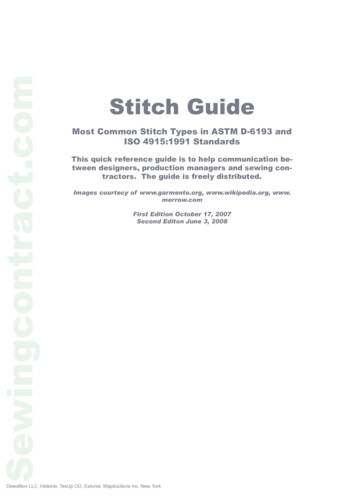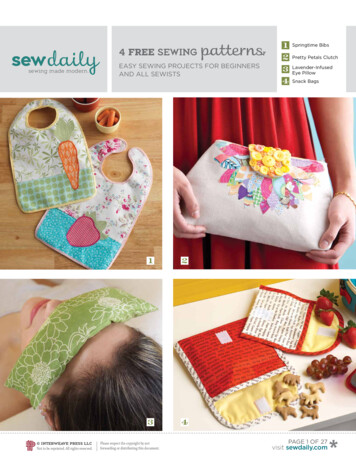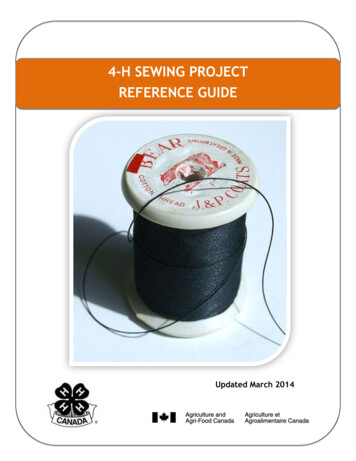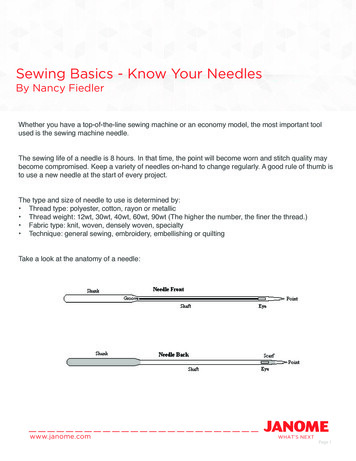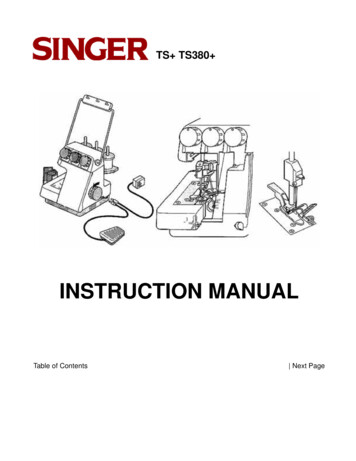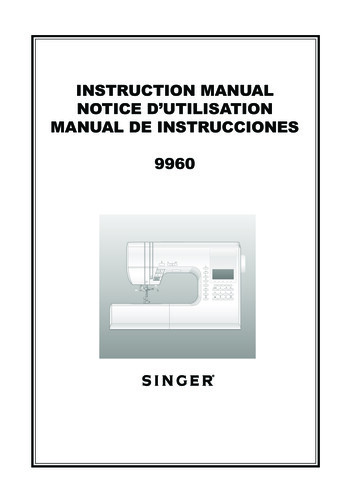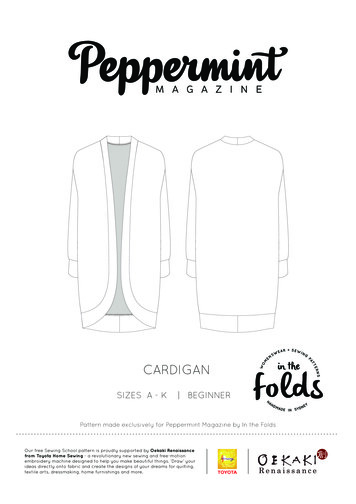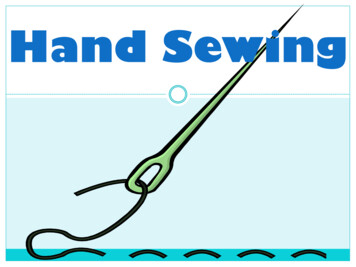
Transcription
Hand Sewing
Right vs. Wrong Side Most fabrics have a “right” and a “wrong” side. Right: It is the top or front of the fabric and is the side of thefabric that is intended to be seen (high finish). Wrong: It is the back of the fabric, the part that is not intended tobe seen (low or no finish).
How to Thread a NeedleDirections: Cut a length of thread 18” – 24” long. Cut at an angle so it will be easier to thread and won’t splitapart Put one end through the eye of the needle.
How to Secure a Knot in aPiece of ThreadDirections: Thread needle making sure to use at least 18”-24” of thread. Pull pieces together so they are even. Fold end of thread in half (about 2”) Twist several times, by rolling the thread between your fingers. Make a single knot. Trim 2 short ends. DO NOT CUT LONG PIECE.Tie a KnotEnd at 1:44
Stitch Sample Project 1 Square piece of fabric (labeled with Name and Hour) 1 Needle Shears or Scissors Thread (Contrasting Color) Stitch Direction Packet & Grading RubricDUE: 12/? with grading rubric attached.
Running Stitch A very short, even stitch for fine, permanent sewingpurposes. Directions: Weave the point of the needle in and out of the fabric byusing very short (1/16”), even stitches before pulling the needlethrough the fabric.Hint: Start in upper left corner and gofrom left to right.Running Stitch Video
How to Tie Off Thread After you have completed a stitch you will need to tie a knot to secure the stitch formcoming out/unraveling.Directions: On your last stitch pull thread to wrong side of fabricGrab a small area of the fabric with the needle and stick the needle through half way.Place finger on needle and wrap thread around it 3-4 times (Similar to tying a knot when fishing).Hold it with your finger and thumb and pull through gently, tightening the knot towards the fabric.Cut off extra thread after the knot.132How to Tie off ThreadStart at 1:44
How to Tie Off ThreadWrong Side (Back) of Fabric
Overcast (Whip) Stitch Keeps raw edges from raveling or fraying. Directions: Stitch at a slant with large, even, closely spaced stitches.Hint: Start in upper left corner and gofrom left to right.Overcast/Whip Stitch Video
Backstitch Is used most often to repair hard to reach seams. Directions: Pull the needle up through the upper side of the fabric,and poke the needle back into the fabric half a stitch behind wherethe thread first emerged. Bring the needle up a half stitch in front ofwhere the thread first emerged. Repeat for the length of your fabric.*Start with asingle runningstitch for your1st stitch.Hint: Start in upper right corner and go fromright to left.Backstitch Video
Blanket Stitch Used for a variety of hand-finished details. Directions: Anchor the first stitch at the edge. Then, point the needletoward you and insert it through the “right” side of the fabric, about ¼’over the preceding stitch. Keep the thread below your work and underthe needle. Your needle with go over the thread.Hint: Always work from left to right with the raw edge of the fabric toward you.Blanket Stitch Video
Button Used to fasten a garment or for decoration. Two Types:2 Hole and 4 Hole Shank *See packet for detailed pictures and directions*“ “ Pattern122 HoleButton Video“ “ Pattern“X” Pattern123414324 Hole
Challenge ActivitiesSewing patterns?Knot tyingPractice sewing straight and smaller stitches
How to Tie Off Thread After you have completed a stitch you will need to tie a knot to secure the stitch form coming out/unraveling. Directions: On your last stitch pull thread to wrong side of fabric Grab a small area of the fabric with the needle and stick the needle through half way. Place finger on needle and wrap thread ar
